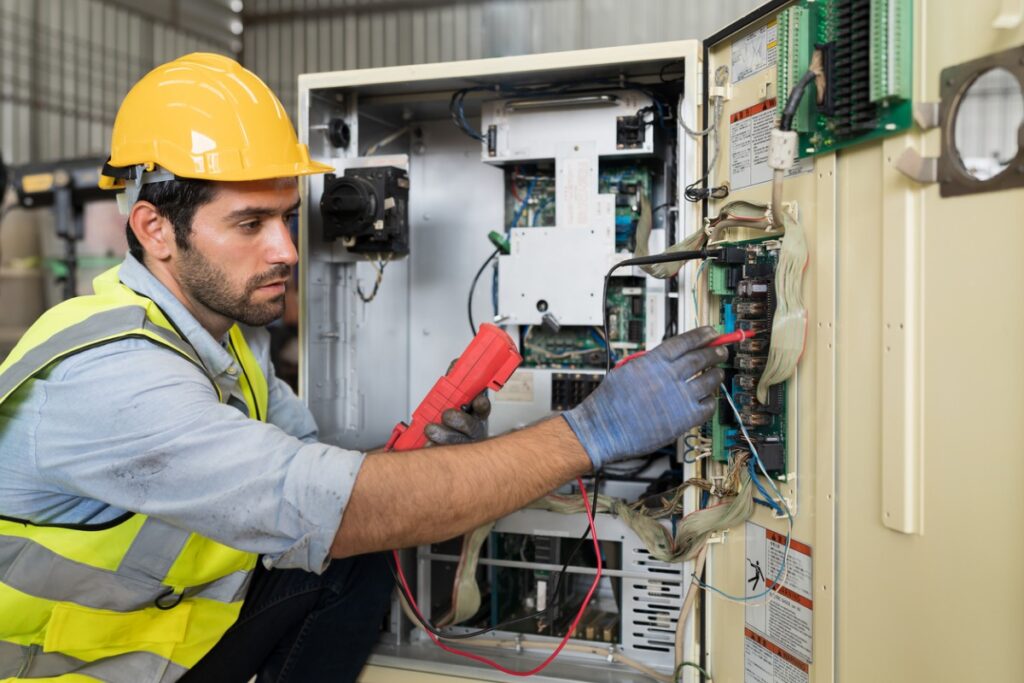Fire safety is a critical concern in electronics manufacturing plants due to the presence of flammable materials, electrical equipment, and high-temperature processes. Implementing comprehensive fire safety measures is essential to protect employees, equipment, and the facility itself. Prime safety management plays a crucial role in developing and enforcing these measures. This article outlines the best practices for fire safety in electronics manufacturing plants to minimize the risk of fire incidents and ensure a safe working environment.
Understanding Fire Hazards in Electronics Manufacturing
Common Fire Hazards
In electronics manufacturing plants, fire hazards can arise from various sources, including:
- Electrical Equipment: Overloaded circuits, faulty wiring, and malfunctioning equipment can ignite fires.
- Flammable Materials: Solvents, chemicals, and dust can be highly flammable.
- Soldering and Welding: High-temperature processes can cause sparks and ignite nearby materials.
- Static Electricity: Static discharge can ignite flammable substances.
Impact of Fire Hazards
Fires in electronics manufacturing plants can lead to severe consequences, such as:
- Injuries and Fatalities: Fires pose significant risks to employee safety.
- Property Damage: Fires can destroy equipment, materials, and infrastructure.
- Production Downtime: Fire incidents can halt production, leading to financial losses.
Implementing Fire Safety Measures
Fire Risk Assessment
Conducting a Fire Risk Assessment
A thorough fire risk assessment identifies potential fire hazards and evaluates the effectiveness of existing fire safety measures.
- Identify Hazards: Assess all areas of the facility for potential fire hazards.
- Evaluate Risks: Determine the likelihood and potential impact of each hazard.
- Implement Controls: Develop and implement measures to mitigate identified risks.
Regular Reviews
Regularly review and update the fire risk assessment to ensure it remains effective and relevant.
- Annual Reviews: Conduct annual reviews of the fire risk assessment.
- Post-Incident Reviews: Review the assessment following any fire-related incidents.
Fire Prevention Strategies
Electrical Safety
Implementing strict electrical safety measures can prevent electrical fires.
- Regular Inspections: Conduct regular inspections of electrical equipment and wiring.
- Maintenance: Ensure all electrical systems are properly maintained and repaired.
- Overload Protection: Use circuit breakers and fuses to prevent electrical overloads.
Handling Flammable Materials
Proper handling and storage of flammable materials are crucial for fire prevention.
- Storage: Store flammable materials in designated, well-ventilated areas away from ignition sources.
- Labeling: Clearly label all flammable materials and provide safety data sheets (SDS).
- Spill Containment: Use spill containment systems to prevent the spread of flammable liquids.
Static Electricity Control
Implement measures to control static electricity and prevent ignition of flammable substances.
- Grounding and Bonding: Ensure all equipment is properly grounded and bonded.
- Antistatic Measures: Use antistatic mats, wrist straps, and clothing.
- Humidity Control: Maintain optimal humidity levels to reduce static charge buildup.
Fire Detection and Alarm Systems
Installing Fire Detection Systems
Early detection of fires is critical for minimizing damage and ensuring a swift response.
- Smoke Detectors: Install smoke detectors throughout the facility, especially in high-risk areas.
- Heat Detectors: Use heat detectors in areas where smoke detectors may not be suitable.
- Flame Detectors: Install flame detectors in areas with a high risk of open flames.
Alarm Systems
Ensure that fire alarm systems are effective and provide clear warnings.
- Audible Alarms: Use audible alarms that can be heard throughout the facility.
- Visual Alarms: Install visual alarms, such as flashing lights, to alert hearing-impaired employees.
- Emergency Notification: Integrate alarm systems with emergency notification systems to ensure prompt evacuation.
Fire Suppression Systems
Fire Extinguishers
Ensure that fire extinguishers are readily available and employees are trained in their use.
- Types of Extinguishers: Provide the appropriate types of fire extinguishers (e.g., Class A, B, C, and D) based on the specific fire risks.
- Accessibility: Place fire extinguishers in easily accessible locations.
- Maintenance: Regularly inspect and maintain fire extinguishers to ensure they are in working order.
Automatic Fire Suppression Systems
Install automatic fire suppression systems to quickly control and extinguish fires.
- Sprinkler Systems: Use sprinkler systems to provide widespread fire suppression.
- Gas Suppression Systems: Install gas suppression systems in areas with sensitive electronic equipment.
- Foam Systems: Use foam suppression systems for flammable liquid fires.
Emergency Response Planning
Developing an Emergency Response Plan
A comprehensive emergency response plan is essential for ensuring a swift and effective response to fire incidents.
- Evacuation Routes: Clearly mark and maintain evacuation routes.
- Assembly Points: Designate assembly points for employees to gather during an evacuation.
- Emergency Contacts: Maintain a list of emergency contacts, including local fire departments and emergency services.
Training and Drills
Regular training and drills ensure that employees are prepared to respond effectively to fire incidents.
- Fire Safety Training: Provide fire safety training to all employees, including the use of fire extinguishers and emergency procedures.
- Evacuation Drills: Conduct regular evacuation drills to practice safe and efficient evacuation.
- Role Assignments: Assign specific roles and responsibilities to employees for emergency response tasks.
Compliance with Regulations
Understanding Fire Safety Regulations
Ensure compliance with local, state, and federal fire safety regulations and standards.
- OSHA: Follow Occupational Safety and Health Administration (OSHA) regulations for workplace fire safety.
- NFPA: Adhere to National Fire Protection Association (NFPA) standards, such as NFPA 70 (National Electrical Code) and NFPA 101 (Life Safety Code).
- Local Codes: Comply with local fire safety codes and regulations.
Regular Audits and Inspections
Conduct regular audits and inspections to ensure ongoing compliance with fire safety regulations.
- Internal Audits: Perform internal fire safety audits to identify and address potential issues.
- External Inspections: Cooperate with external fire safety inspections conducted by local fire authorities.
Conclusion
Fire safety in electronics manufacturing plants requires a comprehensive approach that includes fire risk assessment, prevention strategies, detection and alarm systems, suppression systems, emergency response planning, and regulatory compliance. By implementing these best practices, manufacturers can create a safer work environment, protect their employees and assets, and minimize the risk of fire-related incidents.
Stay tuned for more news and updates on Infinite Insight Hub!



